(Editor’s note: It has been six months since the Palisades Fire and the fire cause has not been reported. An after action report has also not been issued. Below is CTN’s report.)
At about 10:30 a.m. on January 7, 2025, the Watch App alert, which receives feed from ALERTCALIFORNIA cameras show a small plume of smoke.click here.
Since this was a burn scar from a fire a week ago, and Santa Ana’s were predicted, why wasn’t a water truck perched in the Highlands?
One hiker saw the smoke and it took about 15 minutes walking back towards the Highlands before he was able to get a signal to call 911. (The 911 reports have not been released, yet.) Cell phone reception is notoriously bad in Pacific Palisades, many people who live in the Highlands have a landline.
It was reported that it took about 20 minutes around 10:48 a.m. before Station 69, was the first to arrive on scene. A resident has a photo of Station 23 going up the hill around 10:53. (Fire logs have not been released, pending the ongoing investigation.)
Even with the predicted Santa Anas, the initial response was light, with few stations responding and no immediate aerial response. (An earlier fire in Hollywood had many of the resources. CTN has asked if President Joe Biden were in town if that resulted in a lack of air response but was told that the aerial response went to Hollywood and air space wasn’t an issue for the Palisades Fire.)
After firefighters arrived, almost immediately some of the hydrants were not working. Station 69 tests the hydrants generally in January and reports them via computer to DWP, which is tasked with repair. Repairs were not done. Initially DWP reported that firefighters were at fault because they hadn’t received the report.
Two reservoirs were empty in Pacific Palisades Chautauqua and Santa Ynez, both sources where water trucks could have filled. Other water sources included the Maggie Gilbert Swimming Pool and backyard pools in numerous homes. In order for fire trucks to use pool water, they need an eductor pump. County engines have it and CTN asked the City if that is standard equipment on its trucks. It is.
On January 7, at 10:30 a.m. the fire was under LAFD, at 11:30 a.m., the County took over and at 12:30 p.m. Cal Fire was in charge, according a news conference held at 3:30 p.m. on January 7.
Acting Mayor Marquesse Dawson-Harris said, “The city is well-prepared and has a tremendous emergency management infrastructure that has been on the case since 6 a.m. this morning.”
At that point, people were told that the fire was moving southwest. Governor Gavin Newsom, who spoke at that press conference held at Will Rogers State Beach parking lot said, “We’re not out of the woods,” and stressed “how important it is to heed the evacuations.”
According to a former County Fire Chief, who was following the fire from his home on DePauw, the fire initially burned to the east, against the wind and could have been put out in the beginning. He said that a Master Mutual Aid Plan had been put into place, dividing California into six regions and was poised to help.
“When a single fire department has an emergency that has overwhelmed all of its resources, that department (LAFD) contacts the Regional Operations Center for immediate need of strike teams for structure protection,” he wrote in a letter to the L.A. Times (not published) and also to CTN. “The Palisades Fire Incident Commander should have requested at least 10-20 strikes teams from all of the Southern California Regional Operations Center early on. It should not have taken more than four hours for strike teams from Region 1 to arrive in the Palisades if they were requested early enough.”
Many residents found few or no firefighting engine companies or strike teams on the streets in Pacific Palisades, before they evacuated.
The exact timeline and the orders given for fighting the fire were requested under a Public Records Request, but CTN was told they were unavailable because the fire was still under investigation.
FIRE TRUCKS/CELL PHONES/MAPPING:
Hook and ladder firetrucks cannot make it down some of the narrow Palisades Streets (which is why people saw them lined up on Will Rogers Beach). Different, smaller water trucks are needed in very high fire severity areas. That was a recommendation the fire department made after the 1961 Bel Air Fire, but appears was never implemented.
Additionally, anyone living in Palisades knows that cellphones do not work in many areas of the Highlands, Castellammare and Paseo Miramar and one wonders if the transmissions between command and different units was unsuccessful.
Maps do not show all the dead end and vacated streets in Pacific Palisades. (Many streets, which are out of service are still listed on maps. click here.
Outside units would have no idea about side streets that could be used to access different areas of the town. Basically the only way in or out of Pacific Palisades is Sunset, Chautauqua and Temescal. All of the town streets feed into one of those major thoroughfares.
For example, one unit was stationed on PCH, and couldn’t access Sunset. A resident told firefighters the road that goes past upper Bel Air Bay club, was passible – but it wasn’t on the firefighter’s map.
In a fire like this it seems that one local firefighter that is aware of the area, could be assigned to an outside unit to help with navigation.

Actor Steve Guttenberg tried to help move abandoned cars, that people had fled running to the beach to escape the fire. With the gridlock firetrucks could not access the roads to get to homes.
NO EVACUATION ALERTS:
Had this fire happened after 8 p.m., it might have resulted in a catastrophic number of fatalities. Many Palisades residents never received Evacuation Alerts. Once again, with cell phone reception spotty, many people who turn their cell phones off for the evening or can’t rely on the service, are not alerted. In the 1961 Bel Air Fire, one of the recommendations was sirens, which were never installed.
After the Camp Fire (2018) in Paradise, sirens were installed in that community. According to the website “A 1-minute-long siren tone will indicate residents should evacuate immediately. The siren tone should then be followed by a Voice Command telling residents to evacuate immediately and any appropriate additional information, such as the direction of evacuation.”click here.
ELECTRICITY:
As early as the 1961 BelAir Fire, the fire report recommended undergrounding power lines. The number of power lines that snapped or went down during the Palisades Fire, which possibly started additional fires in the town is still unreported. This editor asked for that number in a public records request and has not received it, yet. This editor was also told by DWP that the power, even in the midst of the fire, was never shut off.
GAS EXPLOSIONS:
Gas has to be shut off manually in every home. There are reports that because gas was not shut off before people evacuated, when fires burned homes, it caused the gas lines to explode.
HOUSE HARDENING:
Many residents, who had remodeled or built in the last 30 years, had already used house hardening or fire-resistant materials. Some residents even had sprinkler systems installed in their homes or garages. It appears that water or a retardant is needed to put out the flames. Once a conflagration starts, there is no material that will prevent a fire.
WIND SPEEDS:
Hurricane-force winds was a myth that spread rapidly after the fire. It simply was not true and perhaps floated as a way not to accept blame for simple fixes that could have prevented and lessened the fire.
One reader wrote: “I had a Davis Weather Station at my house in the Huntington Palisades where I saw and recorded the beginning of the Palisades Fire at 10:35 a.m. on January 7. The wind speeds at my location ranged from 3-12 mph from that time all the way until 5 p.m. that evening. My house is around 330 feet altitude there and the fire began a bit higher at say 1000-1500 feet. My weather station location is probably within 1-2 miles away from the fire location as the crow flies.”
Another reader who had a weather station on his home on Via de la Paz, said that around 8 p.m. before it stopped recording, the wind speed was 50 mph. (Hurricane speed windss range from 74 mph and higher.)
Resident Michael Kuderth has done a deep dive into wind speeds and moisture content, comparing it to prior years and found this was not an unique event.
BRUSH CLEARANCE:
In the 1961 report after the Bel Air Fire, firefighters recommended greater brush clearance in the state land surrounding homes. The State, with the exception of clearing brush, near a former Pacific Palisades Community Council President, has not cleared its land. (Interestingly, that land was cleared again this past year and that past president’s home escaped the most recent fire.)
Much of this brush, surrounding Pacific Palisades, has not been cleared since the 1978 fire burned north of Palisades, destroying St. Matthew’s church and some of the homes in the Marquez area.
The area between Temescal Gateway Park, Rivas and Will Rogers State Park was particularly dense and dry. When people in Castellammare asked for brush clearance because of Topanga State Park backing up to their homes, they were told they had to pay for it, and it had to be done under the supervision of a state botanist.
BLAME THE VICTIMS:
Now, there are governmental officials and academics are blaming victims/survivors for the destruction caused by the Palisades Fire because of inadequate building practices and vegetation surrounding homes.
Instead of blaming, causes and prevention should be examined, starting with a police response that punishes people who set off illegal fireworks. When a fire happens, there should be an immediate fire response, an adequate water system and working hydrants, posted fire trucks, electricity and gas shut off, increased aerial water drops and adequate insurance.
Instead, academics tell those who have lost everything they need to build resiliently and must forego vegetation because grass burns.
Gelson’s and Ralphs, supermarkets in fire-resistant buildings with sprinklers surrounded by parking lots and scant vegetation still burned. Look to the Riveria Country Club, well-watered vegetation (and sand), which also didn’t burn.
***********************************************************
Were Palisades Streets Safe for Firetrucks? 39 Palisades Streets Vacated
In 1935, California passed a law allowing cities to pull “municipally owned” property out of public use. The City of L.A. started withdrawing streets in 1936 because a city engineer told lawmakers it would prevent claims against damages arising from defective streets.
In a May 2018 L.A.Times story (“Some L.A. Streets Aren’t Being Repaved Because of a Law Dating from the Depression”), Former City Councilman Bob Blumenfeld said, “Many residents have no idea that their street is withdrawn until they try to get it fixed.”
The Times story reported that the 1935 state code has since been repealed. “And in the decades since, city attorneys have advised that L.A. still bears legal responsibility for such damages on withdrawn streets, according to city records, including a 1988 engineering report and a 2014 motion made by a city councilman.”
Blumenfield asked for a report that would list all the withdrawn streets and what the cost would be to repair them and bring them back into service. The City Council approved the request in March.
According to City records presented to the City Council in September, 374 streets have been withdrawn over the years, including 39 in Pacific Palisades.
Palisades streets withdrawn in 1937 included Giardino Way to Tramonto; W. Livorno Drive (Ida Street to Salerno Dr., Salerno Dr. to Marquez Ave. and Marquez to Bollinger Dr.); Marquette St. (Bienveneda to 400 feet east of Las Casas); Alta Mura Road (San Onofre Dr. to Alta Mura);San Onofre Drive (Alta Mura Rd. to Terminus); Bellino Drive (Tranquillo Road to Sabbiadora Way and Quadro Vecchio Drive to Tramonto); Tranquillo Road (Sabbiadora Way to Tranquillo);Monte Grigio (Sabbiadora Way); Monte Grigio (Tramonto Dr.); Notteargenta Road (Sabbiadora Way to Tramonto); Coperto Drive ( Tramonto Dr.); Via Nicolas (Paseo Miramar); and Fermo Drive (Romany Road to Rustic Canyon Road).
In 1948, 11 streets off Paseo Miramar were “vacated” (Vista Pacifica to Alondra Dr.), (Alondra to Resolano Drive), (Resolano–2), (Resolano to Catalonia Avenue), (Catalonia to Lucero Avenue), (Lucero Avenue via Nicolas), (Via Nicholas to Florence), (Via Florence to Sunset Blvd.), Via Maria (Via Florence) and (Florence via Maria to Paseo Miramar)
After the Pacific Palisades “killer slide” on Pacific Coast Highway (off Via las Olas) in 1957, that road, which transverses the bluffs, was vacated (from Mt. Holyoke to Friends Street).
In 1958, three more roads that fed into Posetano Road (Stretto Way and Revello Drive–both directions) were vacated.
The last street vacations in the Palisades came in 1963 when streets that fed into Tramonto Drive were “let go,” included Revello to Coperto and Coperto to Quadro Vecchio. Also, on that list were Casale Road to Capri, Castellammare Drive to Stretto and Stretto Way to Breve Way.
According to a California Newswire story in October 2018 (“Bureaucratic Oddity Removed to Address LA’s Unpaved Streets”):
“The [City] council, on a 10-0 vote, moved to draft an ordinance that would reverse all the old ordinances and other rules that have withdrawn the streets from use, and address in the future appropriate measures for the “expected small number of streets” that may not be appropriate for public use.”
In an earlier story, CTN discovered that 23 percent of the streets (175 of 769) in Pacific Palisades received an F grade. The average grade was a C- and—vacated streets are not graded.

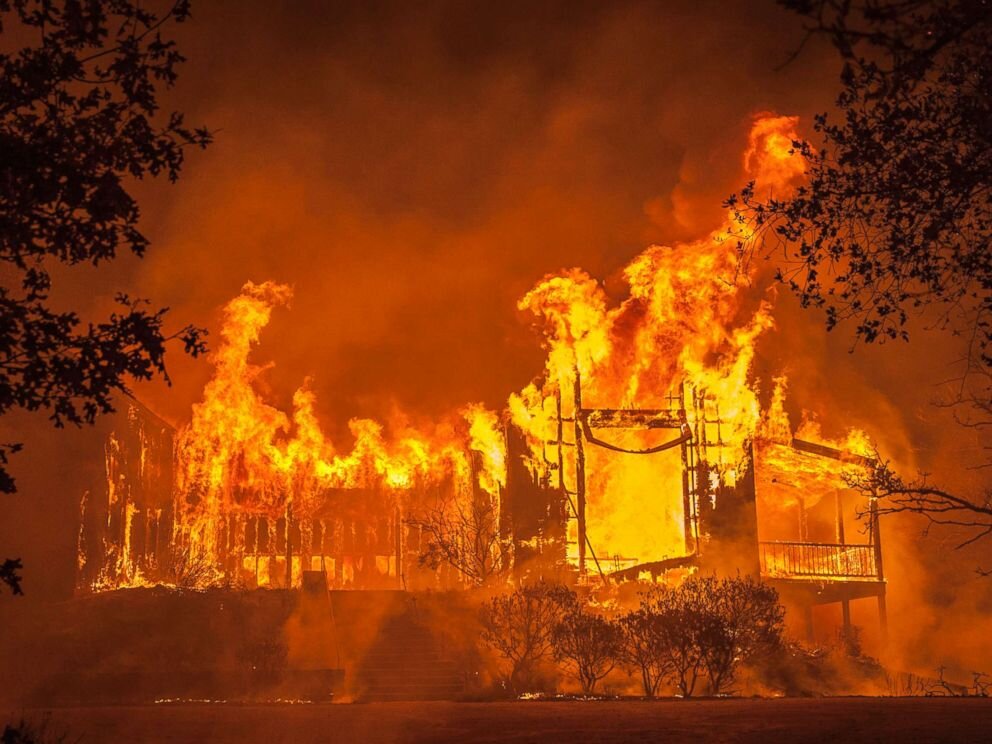
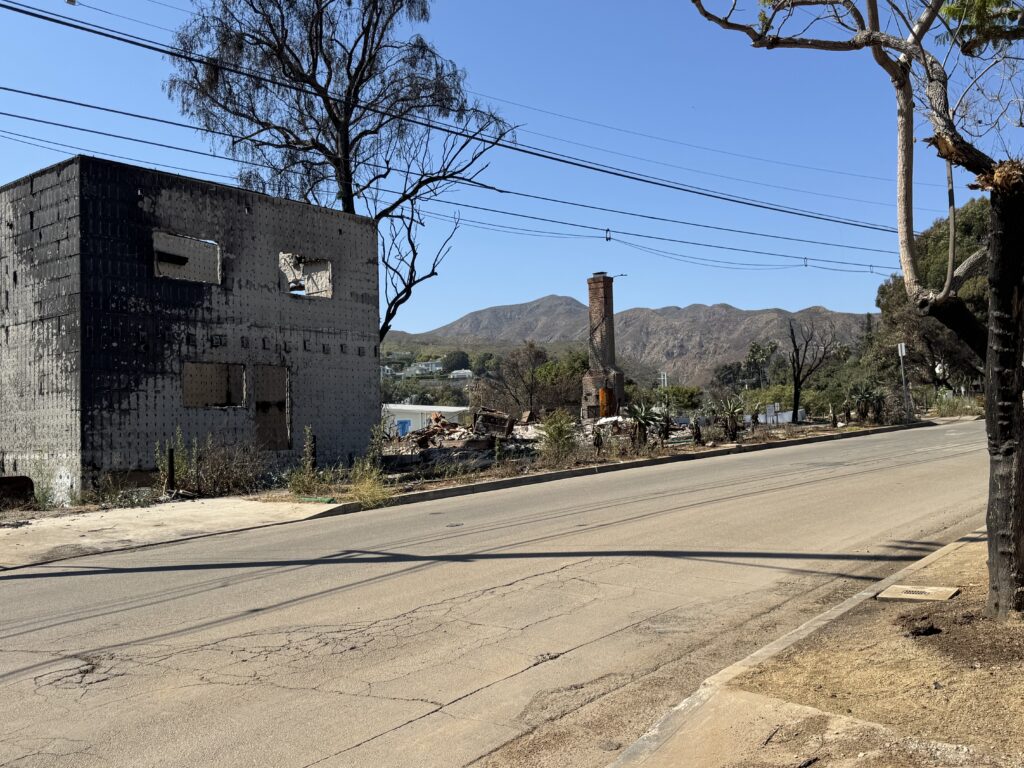

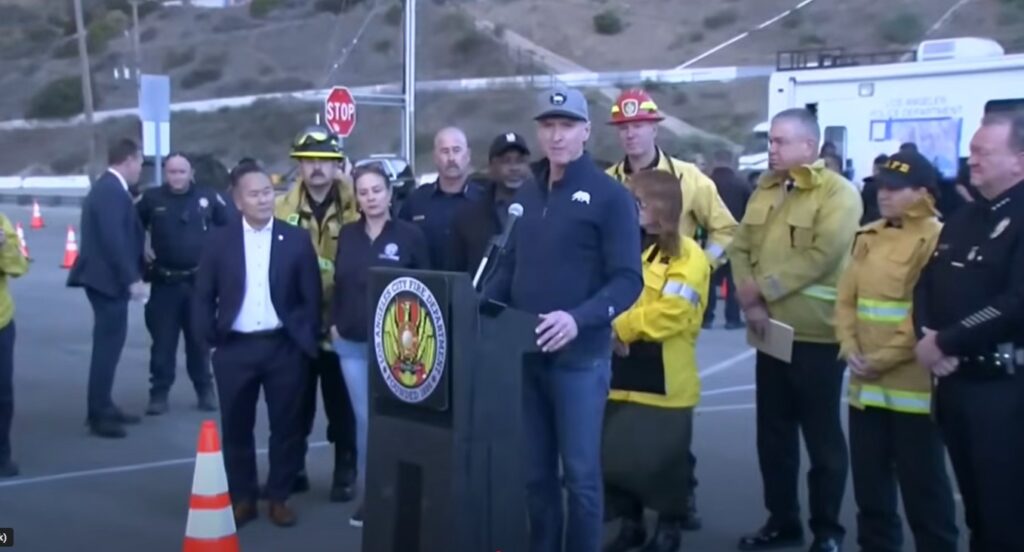
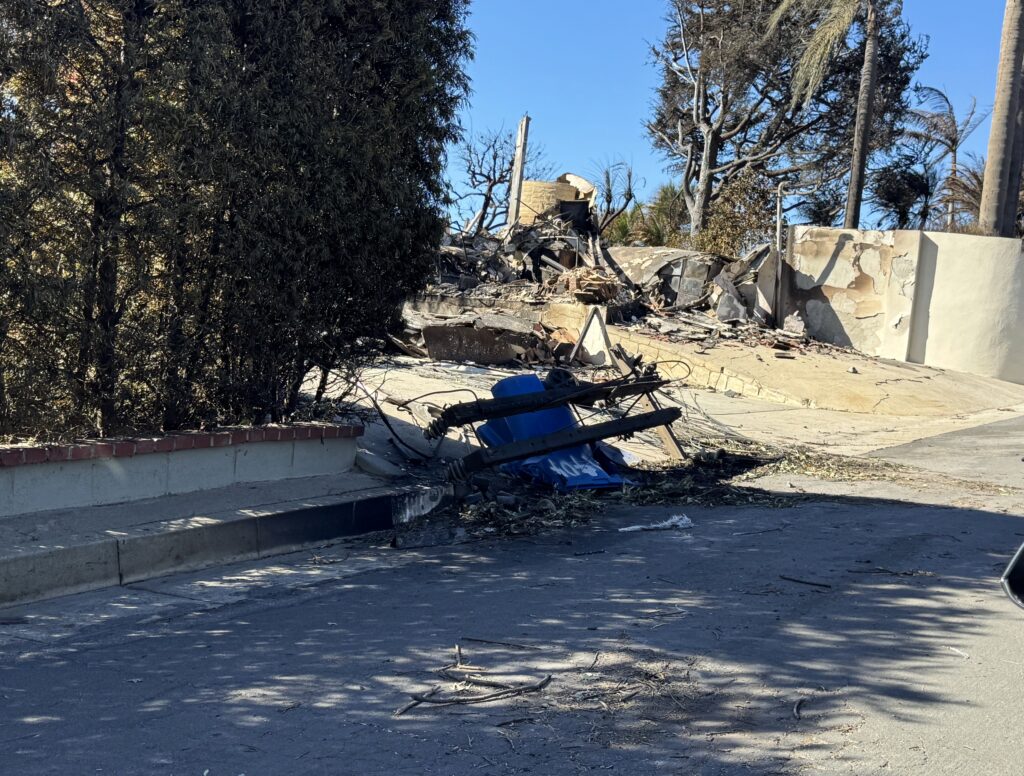
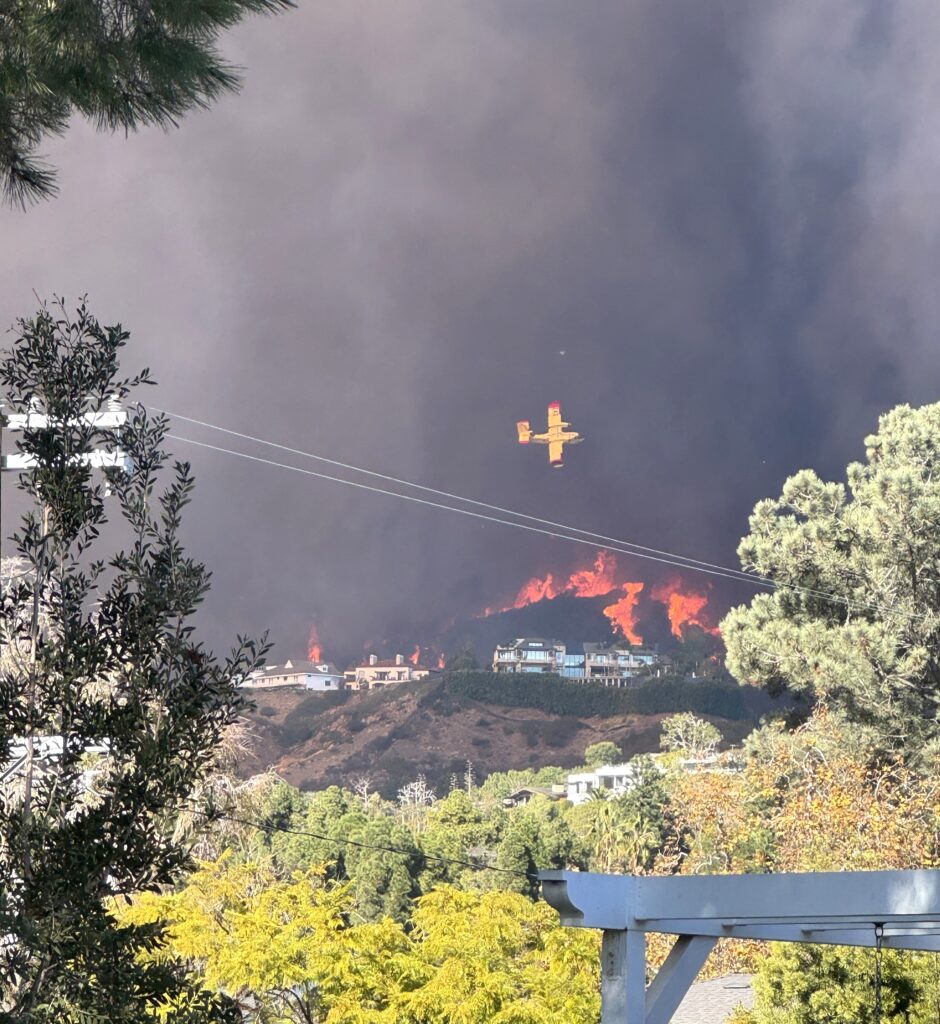
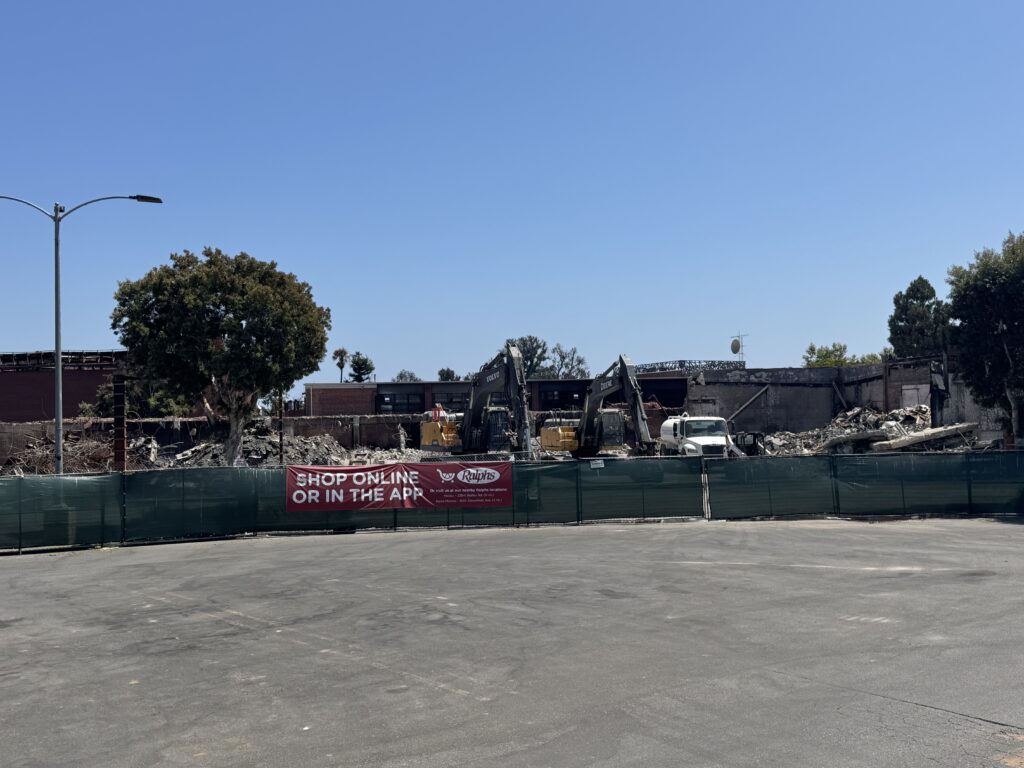
A great report Sue, as always.
When will we get a real review of all of this mess?
Great reporting! I had no idea joe Biden was in town. Here’s his schedule: https://www.presidency.ucsb.edu/documents/pool-reports-january-7-2025
Keep up the good reporting!
Hope your rebuild is moving along.
Great reporting Sue!! Stay on top of these deflecting demons. We need accountability for this disaster, in order to help the healing process for our community.
On Via de las Olas it was Mt Holyoke to Swarthmore, not Friends.
Thank you. Factual information seems to scarce and your work keeping us informed should get awards!
I have photos of a water dropping plane flying over Tahitian Terrace early on and while it may not have been ‘hurricane force winds’, soon after that, I have photos of trees bending in the wind. I turned on my roof sprinkler system (fire system) around noon. It had water flowing off the two roofs (I made it so it would cover the house next door, as well) in sheets but the water was blowing all over. Juan Ochoa, a true hero, making a last check of homes, found me working in my little home office, assuming my water system would be fine. He saved me at around 4:30PM. One thing that drove me nuts was the huge cadre of fire engines parked on PCH, three deep and hugely long, parked despite being right across the street from Tahitian Terrace. TT at that moment was on fire and they didn’t do anything. As we came onto PCH, I screamed at them from the vehicle to stop the fire in TT, begging them …. but they did not move. Now, because of your article, I suspect that they did nothing because they couldn’t get up Tahiti, the road into TT. Fire defenders are true heroes so I was shocked and saddened that they did nothing. That was until I read your work. My house was the top most house, right in front of the green little building that survived that you can see on photos. I was, by far, the last one out, and the last thing I saw was my house catch fire, water and all.
Thank you. Factual information seems to scarce and your work keeping us informed should get awards!
I have photos of a water dropping plane flying over Tahitian Terrace early on and while it may not have been ‘hurricane force winds’, soon after that, I have photos of trees bending in the wind. I turned on my roof sprinkler system (fire system) around noon. It had water flowing off the two roofs (I made it so it would cover the house next door, as well) in sheets but the water was blowing all over. I had work to do and figured I was fine. Juan Ochoa, a true hero, making a last check of homes, found me working in my little home office, around 4:30PM, ignorant – assuming my water system would be fine. He came into the house, shocked I was there. He pulled me out with the fire just across from my house. I would have been another chalk mark in the death column had he not saved me. One thing that drove me nuts was the huge cadre of fire engines parked on PCH, three deep and hugely long, parked despite being right across the street from Tahitian Terrace. TT at that moment was on fire and they didn’t do anything. As Juan drove onto PCH, I screamed at them from the vehicle to stop the fire in TT, begging them …. but they did not move. Now, because of your article, I suspect that they did nothing because they couldn’t get up Tahiti, the road into TT. Fire defenders are true heroes so I was shocked and saddened that they did nothing. That was until I read your work. My house was the top most house, right in front of the green little building that survived that you can see on photos. I was, by far, the last one out, and the last thing I saw was my house catch fire, water and all. With your explanation, the fire trucks parked on PCH make good sense. If they had gotten stuck up there, … more chalk marks in the victim column… so thanks for the elucidation! As difficult as it is coming back from losing a home in the wonderful Palisades, better that than even one life lost.
Cheers,
‘Joy’
Thank you, Sue, for all your great reporting! We all owe you so much!
Thank you for your accurate reporting!
Impeach Bass and Newsome!!! I’m ashamed that these people call themselves Democrats!
Great details. Thank you for the great reporting. I spoke with Ross Palumbo from local LA CBS. He has been amassing similar details and interviews about the fire, brush and maintenance issues. Might be a good idea to get in touch with him to add some of this to his arsenal.